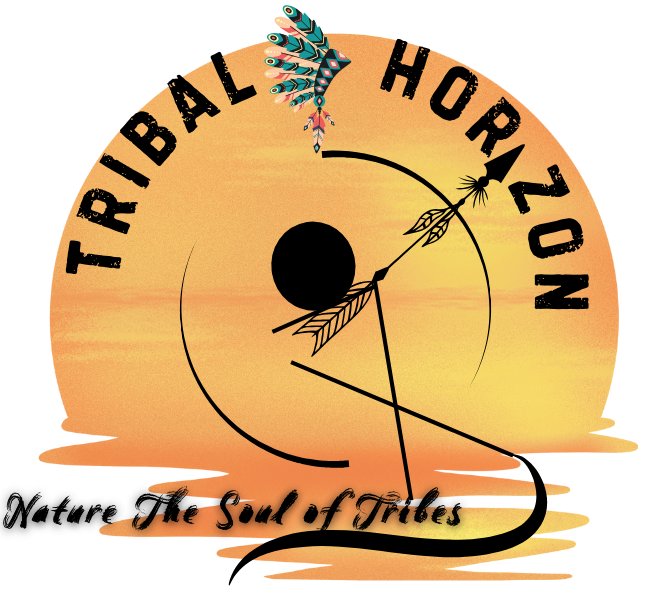Tribal festivals are one of the most vibrant ways in which tribal communities in India and around the world express their unique cultures and traditions. These celebrations honour nature, harvests, seasons, and community bonds. They bring together folk songs, dances, colourful costumes, musical instruments, and communal gatherings, making each festival a reflection of the deep bond between people and nature.
Unlike many mainstream festivals, tribal festivals primarily express gratitude to nature and reinforce tribal identity, which distinguishes them from other communities. In today’s rapidly changing world, they serve as a reminder of our roots, culture, and unity. By preserving ancient traditions, they create a bridge between the past and the future, ensuring that younger generations stay connected to their heritage.
What is a Tribal Festival?
Tribal festivals are community celebrations based on the traditions, beliefs, and lifestyles of tribal groups. Unlike mainstream festivals, which often focus on organised religion, tribal festivals celebrate nature, agriculture, the seasons, and ancestors.
They recognise the resources that nature provides and the importance of a healthy environment. These festivals feature simple but meaningful practices. People may worship trees, rivers, the sun, or the moon, celebrate harvest festivals, and honour local ancestral deities.
Music, folk dancing, storytelling, and folk art are integral parts of these events, making them both spiritually and culturally enriching experiences. At their core, tribal festivals express gratitude. They show appreciation for what is provided: nourishment from nature, guidance from ancestors, and unity within the community. These festivals highlight the belief that every part of nature is sacred and connected to human life.
Historical Importance of Tribal Festivals
Tribal festivals started thousands of years ago, long before organised religions and modern states emerged. We can see signs of these celebrations in tribal art found in caves. For tribal communities, these festivals were more than just seasonal events; they were seen as natural laws from the clan gods. They evolved into important gatherings that reflected the tribes’ way of life and their need for survival. Each festival had deep meanings that were spiritual, social, cultural, and political.
Connection with Nature and Agriculture
In ancient times, tribal life focused on farming, hunting, and gathering. People celebrated festivals that marked important times in nature, like planting seeds, the start of the rainy season, and harvest time. During these festivals, they performed religious rituals to promote fertility, ensure good harvests, and protect against natural disasters. For example, the Karma festival is linked to agricultural success and involves worshipping the Karma tree. Many similar examples are important to know about.
Strengthening Social Bonds
Tribal societies historically lived in small, scattered groups called clans. They held festivals that brought together families, clans, and neighbouring villages. These festivals involved fairs, where people could exchange goods, arrange marriages, settle disputes, and renew friendships. Festivals acted as social magnets, helping to strengthen unity and cooperation within the community. Tribal communities still value this tradition today.
Spiritual and Ancestral Significance
Many tribal festivals are spiritual events. People worship the sun, moon, rivers, sacred trees, and ancestral spirits, all of which connect them to nature. Tribes believe that nature and ancestors are living forces that guide and protect them. These festivals teach the community about the laws of nature. By honouring these forces, communities keep their spiritual identity alive and pass down their beliefs through stories, folksongs, and rituals.
7 Famous Tribal Festivals in India That Showcase Rich Traditions
India represents a rich mosaic of tribal communities, with many scholars asserting that the true essence of India is rooted in these indigenous groups. Numerous studies have corroborated this perspective, revealing that each tribe possesses its own dynamic culture and enduring traditions. From the verdant forests of Madhya Pradesh to the misty hills of Nagaland, tribal festivals act as pivotal events that unite communities through an array of colours, music, folk dances, and customs.
Tribal festivals transcend mere celebration; they embody the very essence of tribal existence, serving to express gratitude towards nature, pay homage to ancestors, and reinforce social cohesion. Consequently, the sacred culture of the world is often regarded as inherently linked to these tribal societies, where culture constitutes a fundamental aspect of identity that goes beyond religious affiliation. Each festival is characterised by its distinctive narrative.
Some festivals are dedicated to welcoming the harvest, others signify seasonal transitions, while many celebrate themes of love, unity, and togetherness. The combination of folk dances, traditional songs, local attire, and enticing regional cuisines creates an atmosphere filled with vitality and joy. This section will examine seven prominent tribal festivals of India, which vividly illustrate the rich traditions and cultural heritage of the nation’s tribal communities.
Each festival serves as an entry point into the unique lifestyles, beliefs, and artistic expressions of the tribes, who have diligently preserved these customs for generations. The younger members of these communities are increasingly taking on the responsibility of ensuring these traditions endure for future generations.
1.Bhil Tribe’s Holi: Rituals and Community Celebrations
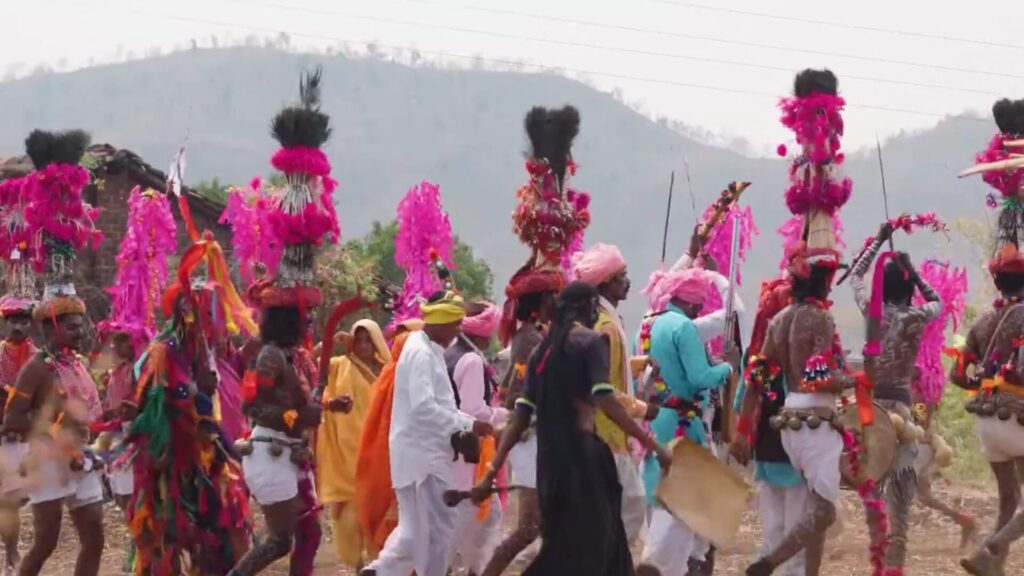
The Bhil tribe is one of India’s largest tribal communities. They celebrate Holi in a way that focuses on tradition, spirituality, and community. Unlike urban celebrations, which are filled with colors, the Bhil tribe’s Holi includes religious rituals, prayers, and a strong respect for nature.
How Bhils Celebrate Holi
The festival begins with prayers to local ancestral deities and ancestors, expressing gratitude for a good harvest and the well-being of the community while seeking blessings. Villagers gather in open spaces to perform traditional rituals, which may include symbolic offerings, ceremonial folk dances, and folk songs. Community festivals are organised, allowing families to come together to share meals and strengthen social bonds. Elders share stories and customs associated with the festival to ensure cultural continuity.
Cultural Significance
For the Bhils, Holi is a festival that shows gratitude and promotes unity. It highlights respect for nature, builds strong community bonds, and keeps the tribe’s spiritual traditions alive. The rituals done during Holi connect the past with the present, making it a time for both celebration and tradition. During Holi, people honour and thank fire, an important element of nature.
2.Hornbill Festival (Nagaland)
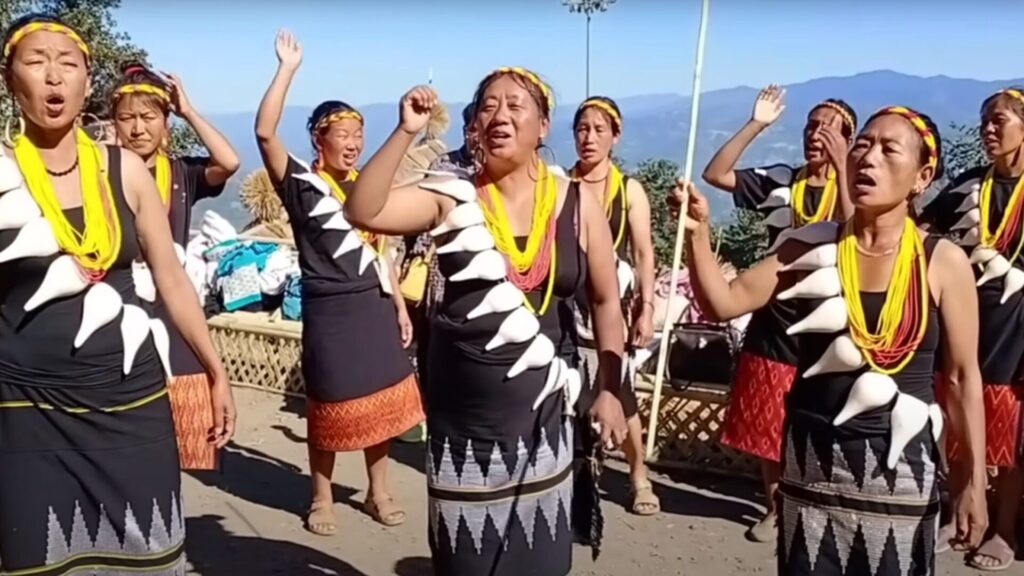
The Hornbill Festival in Nagaland is famously referred to as the “Festival of Festivals” because it unites all 16 Naga tribes to display their rich customs, traditions, music, folk dances, and crafts. Unlike typical urban festivals, the Hornbill Festival is deeply rooted in community values, tribal identity, pride, and cultural preservation.
How Hornbill Festival is Celebrated
In Kohima and other areas, tribal groups come together to perform traditional folk dances, sing folk songs, and tell stories that reflect their heritage. They perform warrior folk dances and Nakshi battles to honor bravery and show tribal strength. At cultural exhibitions, you can see and buy traditional handicrafts, textiles, and local musical instruments. Community festivals and ceremonies build unity among the tribes and help visitors experience Naga life. The tribal community values equality and treats everyone with respect, regardless of their status.
Cultural Significance
The Hornbill Festival isn’t just about showing off culture; it’s all about keeping Naga traditions alive. It helps save tribal languages, music, and customs, while also building pride in tribal identity. Plus, the festival brings younger folks closer to their cultural roots, making sure that age-old traditions stick around. Keeping culture alive for years to come is what tribal culture is really about.
3.Karma Festival (Madhya Pradesh, Bihar, Jharkhand)
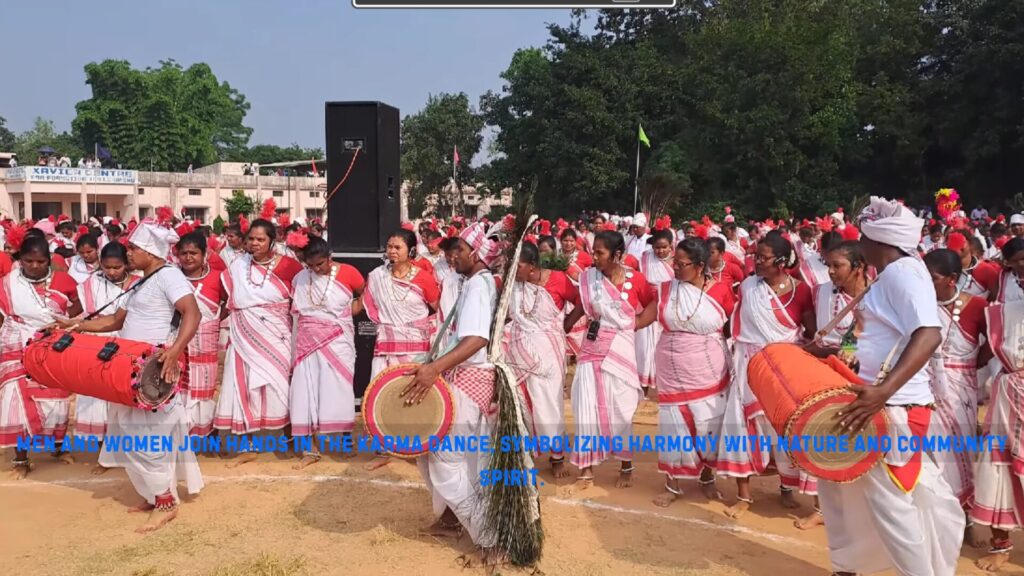
Karma Tribal Festival is celebrated by tribal communities like Oraon, Munda and Gond castes. This festival is not just about entertainment or fun, but is deeply connected to nature, agriculture and community well-being. Tribal practices with karma are important.
How Karma Festival is Celebrated
Karma Utsav is a festival celebrated by tribal communities, including the Oraon, Munda, and Gond castes. This festival is important for connecting with nature and agriculture and for promoting community well-being. It focuses on strengthening the bonds between brothers and sisters and encourages community practices.
How Karma Festival is Celebrated
The festival centres around the worship of the Karam tree, regarded as sacred and a symbol of fertility and prosperity. Villagers gather in open spaces to perform traditional folk dances and songs, often forming circles around the tree. Ceremonial offerings are made to gods and ancestors, seeking blessings for good harvests and protection from misfortune. Elders guide the younger members in performing traditional rituals, ensuring the continuity of cultural knowledge.
Cultural Significance
The Karma festival celebrates unity, respect for nature, and tribal identity, along with self-respect. It brings communities together and highlights the connection between people and the environment. The rituals of this festival have been passed down through generations, showing the rich traditions of the Oraon, Munda, and Gond tribes.
4.Sarhul Festival (Jharkhand, Odisha): Welcoming Spring with Sacred Rituals
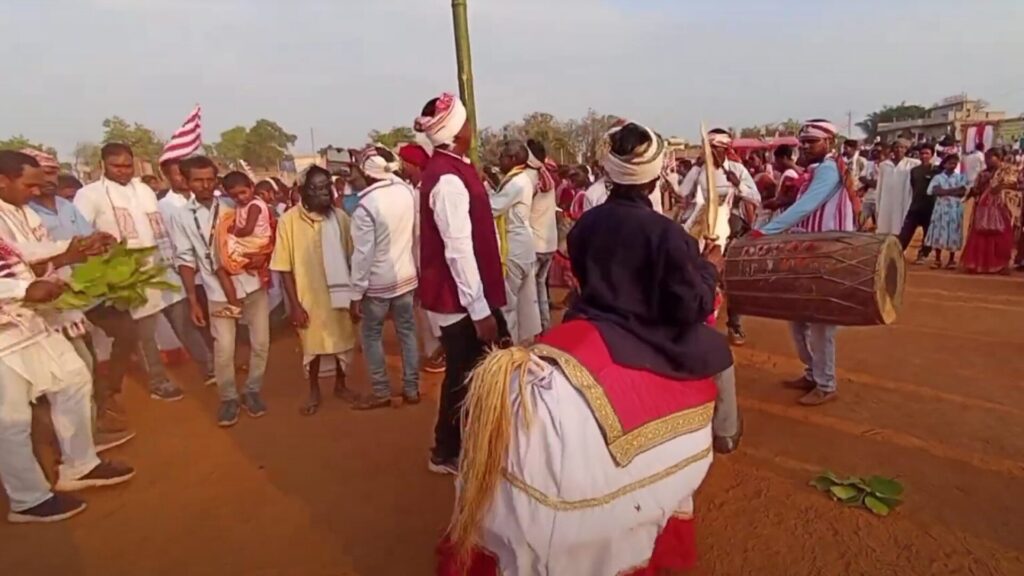
The Sarhul festival is an important event for the Oraon, Munda, and Ho tribes. It takes place mainly in Jharkhand and parts of Odisha. This festival celebrates the arrival of spring and new beginnings. It honours Mother Earth, village deities, and nature.
How Sarhul Festival is Celebrated
The festival commences with the veneration of the Sal tree, a sacred symbol of life and strength. A traditional priest, known as a pahan, conducts rituals that involve offering flowers, seeds, and water to the deities, promoting fertility and the welfare of the community. Villagers prepare handiya, a traditional rice beer, which they share as part of the communal festivities. The atmosphere is enriched by traditional folk dances and songs that convey a sense of joy, gratitude, and unity with nature.
Cultural Significance
Sarhul is all about the connection between people, nature, and the divine. It highlights the idea that nature plays a big role in our lives, so we should respect and honor it. For tribal communities, Sarhul isn’t just a festival; it’s a way to share important knowledge, teach about caring for the environment, and pass down spiritual traditions to younger generations.
5.Dree Festival (Arunachal Pradesh)
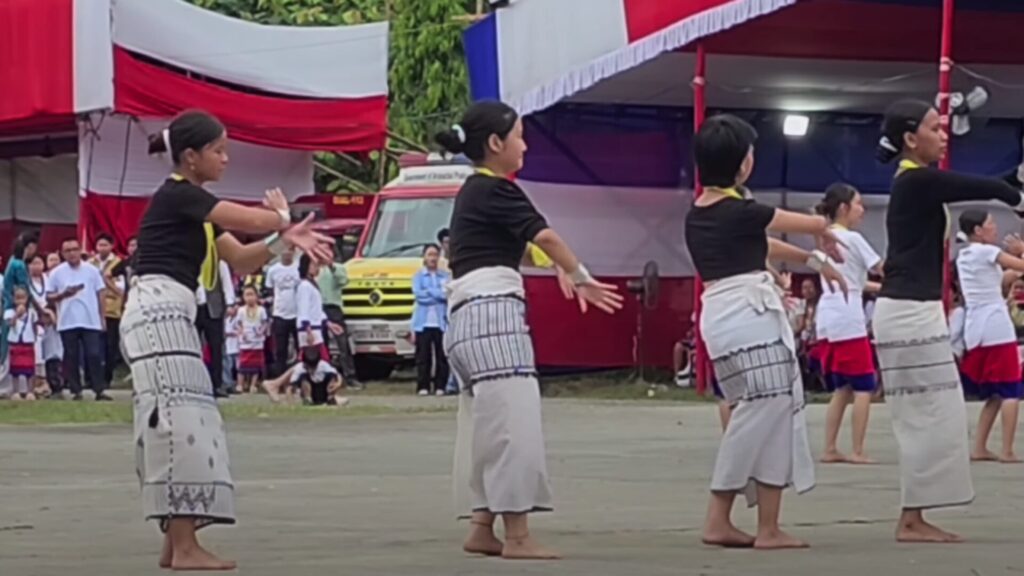
The Dree Festival is an important agricultural celebration for the Apatani tribe in Arunachal Pradesh. It focuses on helping crops grow well, protecting the community from hunger, and promoting prosperity.
How Dree Festival is Celebrated
The priest, known as Nyibu, undertakes the significant responsibility of conducting rituals and offering sacrifices, which may include animals, cucumbers, and rice beer, with the intention of honouring and appeasing nature deities. Special prayers are solemnly directed towards various deities, including Tamu, Harniang, Metii, and Danyi, seeking divine blessings for an abundant harvest while also requesting protection against pests, diseases, and natural calamities.
The community gathers to engage in folk dances, songs, and traditional feasts, which serve to strengthen communal bonds and express shared joy. Women adorn themselves in traditional Apatani attire and prepare local delicacies, thereby contributing to the vibrant and colorful ambience of the festival.
Cultural Significance
The Dri festival highlights the strong agricultural traditions of the Apatani tribe. It embodies their belief that human life and existence rely on harmony with nature and divine forces. Grains are essential for sustaining life. By celebrating Dri, the Apatani people preserve their cultural traditions, strengthen community unity, and pass environmental knowledge down to future generations.
6.Madai Festival (Chhattisgarh)
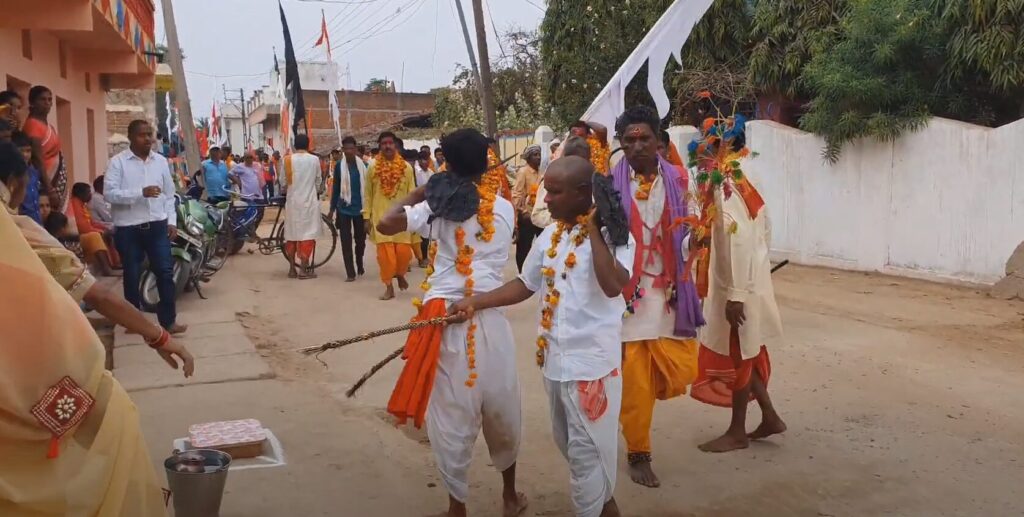
The Madai festival is an important event for the Gond people and other tribal communities in Chhattisgarh. It is a time for gratitude and worship. Villages come together to thank their clan gods and honor their ancestors through a religious procession and community fair.
How Madai Festival is Celebrated
The main tradition is to carry the idol of the tribal deity in a grand procession with drums, flutes, and folk songs. Villagers offer coconuts, rice, flowers, and animals as gifts to the deity. A big community gathering, called a mela, takes place. People perform folk dances in circles, sing traditional folk songs in the Gondi dialect, and exchange items. Storytellers, priests, and elders share legends and perform rituals to honor ancestral spirits and local deities.
Cultural Significance
The Madai festival is a time for unity, devotion, and preserving culture. Villages that are often apart come together, which strengthens their community bonds. The festival shows how important faith, storytelling, and shared joy are in tribal life. For the Gond people, it is a sacred event that connects them to their ancestors, nature, and spiritual beliefs.
7.Wanchuwa Festival (Assam)
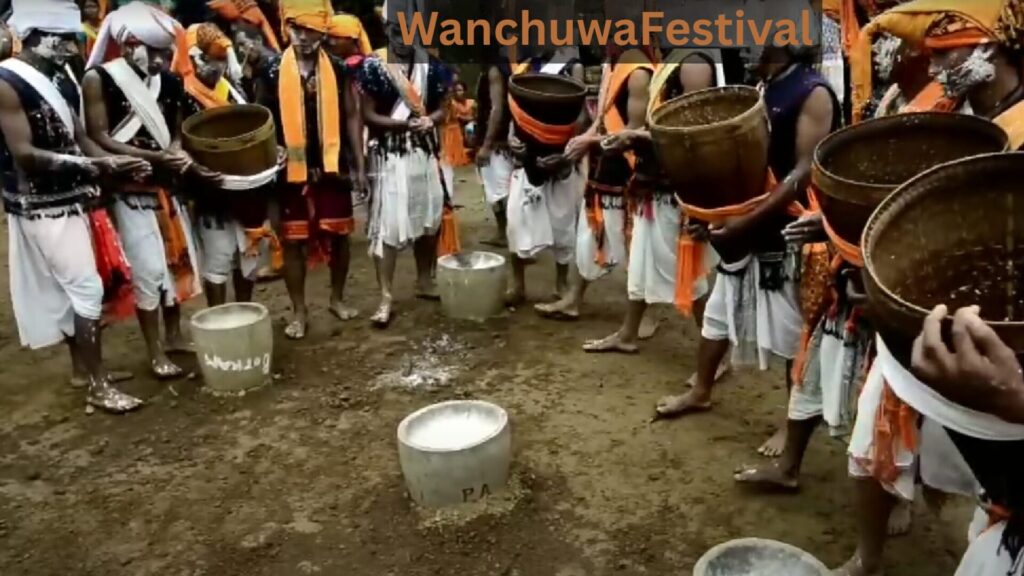
The Tiwa tribe in Assam celebrates the Wanchuwa Festival at the end of the harvest season. Tribal festival is a way for the community to thank nature and their ancestors for a good harvest and for protection during tough times.
How Wanchuwa Festival is Celebrated
The Tribal festival is a significant occasion dedicated to honouring local deities and ancestors through rituals aimed at invoking blessings for prosperity and protection. Participants engage in the Pohar folk dance, where individuals don traditional costumes and perform in unison. This collective expression is significant among tribal communities, symbolising unity, positivity, and joy.
The celebration is enriched by the resonant sounds of drums, bamboo instruments, and folk songs, fostering a vibrant and festive atmosphere. Moreover, communities come together to enjoy communal feasts, rice beer, and cultural performances, resulting in a remarkable blend of devotion and entertainment.
Cultural Significance
The Wanchuwa Tribal Festival serves as a testament to the agricultural heritage and ecological wisdom of the Tiwa tribe. It embodies their fundamental belief in the interconnectedness of human life and the natural cycles of the environment. Beyond its role as a harvest celebration, the Wanchuwa Festival is instrumental in strengthening tribal identity, fostering unity among villages, and nurturing cultural pride. This event plays a vital role in preserving traditions for future generations.
The Timeless Spirit of Tribal Festivals
Tribal festivals are more than just seasonal celebrations; they are vibrant cultural traditions that embody the wisdom, spirituality, and pride of tribal communities. From the colourful Bhil Holi to the harvest prayers of Dhri and Vanchuvani, each festival reflects a deep connection with nature, ancestors, and community unity. In today’s modern world, these festivals serve as a valuable reminder of the importance of roots, cultural heritage, and ecological balance.
By preserving and celebrating them, tribal communities ensure that their stories, folk songs, and rituals continue to inspire future generations. Thus, tribal festivals are not just for tribal people; they represent the rich soul of India’s cultural diversity, offering lessons for the entire world.
A Message for the Modern Generation
Tribal festivals are not merely relics of the past; they offer timeless lessons for today’s world. In an era of rapid urbanization and technological advancement, these festivals remind us of the importance of respecting nature, fostering community life, and upholding traditions.
For the modern generation, the message is clear:
- Stay connected to your roots because culture shapes identity.
- Value nature as our ancestors did for without it, survival is impossible.
- Celebrate unity and diversity festivals are about coming together, not division.
- Preserve traditions so that future generations can experience the same richness of culture.
Learning from tribal communities can help today’s youth embrace sustainability, simplicity, and a sense of community. Tribal festivals show us that true happiness comes from being together, feeling grateful, and living in harmony with nature.
FAQ
Which is the most famous tribal festival in India?
The Hornbill Festival in Nagaland is called the “Festival of Festivals.” It is one of the most popular tribal celebrations in India. The festival brings together 16 Naga tribes to show their culture, music, dance, and traditions.
Why are tribal festivals important?
Tribal festivals play a crucial role in preserving ancestral traditions, ecological knowledge, and cultural identity. These events foster a connection between younger generations and their heritage, while also highlighting the importance of community living and the need to maintain harmony with nature.
Which states in India celebrate the most tribal festivals?
Tribal festivals are celebrated across India, but states like Jharkhand, Chhattisgarh, Madhya Pradesh, Odisha, Nagaland, Arunachal Pradesh, and Assam are especially known for their rich tribal traditions.
How are tribal festivals different from mainstream festivals?
Unlike mainstream festivals, tribal festivals are closely linked to agriculture, nature, and ancestral worship. They focus more on rituals, communal harmony, and cultural preservation rather than commercialisation.
What can the modern generation learn from tribal festivals?
The modern generation can learn the values of sustainability, gratitude, and togetherness from tribal festivals. They highlight that true happiness comes from living in balance with nature and strengthening community bonds.
Conclusion
Tribal festivals are more than just seasonal events; they represent a profound emotional expression of identity, tradition, and unity. Whether it’s the vibrant Bhil Holi, the sacred Sarhul Vidhi, or the grand Hornbill Festival, each celebration embodies centuries of wisdom and the deep bond between humanity and nature. In today’s rapidly changing world, these festivals serve as reminders that cultural roots and ecological balance are vital for a meaningful life.
They teach us values such as gratitude, unity, and respect for traditional principles that the modern generation can uphold. By celebrating and preserving tribal festivals, we not only honour tribal communities but also protect India’s rich cultural diversity for the future. These festivals are living treasures that weave together the past, present, and future in a continuous thread of humanity. Due to the extensive nature of the topic, we will explore tribal festivals in greater detail in the second part.
Your feedback means a lot to us.
If you have any questions, suggestions, or concerns, feel free to leave a comment below. We’re here to listen, grow, and improve together.
THANK YOU……………………….
